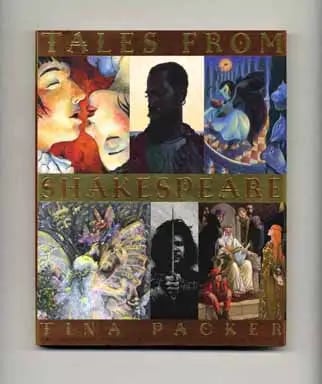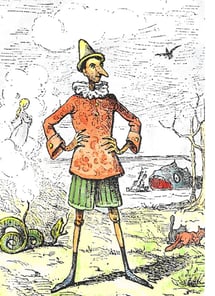Since the innovation of motion pictures, filmmakers have been turning to literature for inspiration. Some of the earliest silent movies were adaptations of famous stories that would have been well-known to audiences of the time. With the advent of animation came even more opportunities to adapt beloved stories in a new format.
In 1938, Walt Disney Productions released the first feature-length animated movie, Snow White and the Seven Dwarves, based on the classic Brothers Grimm fairy tale. Since then, Disney has continued to turn your favorite stories into your favorite movies. Join us in this new series as we take a look at each of the books that have inspired a Disney animated feature:
"The Little Mermaid" by Hans Christian Anderson
“But a mermaid has no tears, and therefore she suffers so much more.”
One of Disney’s biggest animated hits and recent live-action adaptations was based on “The Little Mermaid,” a fairy tale written by Danish author Hans Christian Anderson. The story originally appeared in his 1837 book Fairy Tales Told for Children. A statue in honor of the mermaid sits on a rock in Copenhagen, Denmark. It is a massive tourist attraction. Anderson’s stories also inspired other Disney adaptations. His story “The Snow Queen” was adapted into Frozen.
 Hamlet by William Shakespeare
Hamlet by William Shakespeare
“Something is rotten in the state of Denmark.”
While it may seem like a stretch to some, Disney's smash hit The Lion King is an adaptation of Shakespeare's Hamlet. Like the eponymous prince of Denmark, Simba also experiences a conniving uncle killing his father to take control of the kingdom and his uncle. While some characters are represented (Simba for Hamlet, Scar for Claudius, Zazu for Polonius), others are present but differ greatly from their dramaturgical counterparts (Nala for Ophelia, Timon, and Pumbaa for Guildenstern and Rosencrantz). Other important characters like Laertes and Horatio are not present in the adaptation. Luckily, most characters have a happier ending than they do in the play.
Beauty and the Beast by Gabrielle-Suzanne Barbot de Villeneuve
“To see you was instantly to love you. Entering your apartment, tremblingly, my joy was excessive to find that you could behold me with greater intrepidity than I could behold myself.”
De Villeneuve is credited with writing the oldest version of Beauty and the Beast, which reimagines the myth of Cupid and Psyche from Greek mythology. Her version, which contained a large cast that included numerous siblings for the character of Belle and a loving mother and fairy villain for the beast, was pared down in later versions to become more similar to what many people know from the Disney version. Notably, the castle’s staff in the story are animals rather than living objects.
The Chronicles of Prydain by Lloyd Alexander
“Most of us are called on to perform tasks far beyond what we can do. Our capabilities seldom match our aspirations, and we are often woefully unprepared. To this extent, we are all Assistant Pig-Keepers at heart.”
One of Disney's biggest flops (yet one of my personal favorites) is 1985's The Black Cauldron. The movie combines the first two books in Lloyd Alexander's Chronicles of Prydain: The Book of Three and The Black Cauldron. Notably darker than many Disney movies, one has to wonder if the timing was off and if an adaptation of these fantasy novels inspired by Welsh mythology was released today. While the movie wasn’t successful, it has gained a cult following. It also represents many firsts for Disney. It was their first film to use Dolby Stereo, the first to use computer-generated graphics, and their first film to earn a PG rating.
One Thousand and One Nights
The movie Aladdin is based on the story “Aladdin’s Wonderful Lamp,” which was collected in the compilation of Middle Eastern folklore, One Thousand and One Nights. Interestingly enough, while this story is one of the most popular and globally known stories told by Scheherazade to the king to prolong her life, it wasn’t included in the original Arabic text. Instead, it was added by French writer Antoine Galland in his translation. He purports to have heard it from a Syrian storyteller Hanna Diyab. With no official Arabic source, the story remains unattributed to any one author. However, some scholars suggest Diyab himself is the author, as certain situations in the story are similar to his autobiography.
 The Adventures of Pinocchio by Carlo Collodi
The Adventures of Pinocchio by Carlo Collodi
“Most unfortunately, in the lives of puppets, there is always a 'but' that spoils everything.”
Carlo Collodi’s 1883 novel was the inspiration for the Disney movie Pinocchio. The book is one of the most widely translated works in Italian literature and considered one of the most important works in the Italian literary canon. The story of the marionette who yearns to become a real boy is one of the most recognized characters in children’s literature, with his famous nose that grows when he lies an indelible part of pop culture worldwide.









